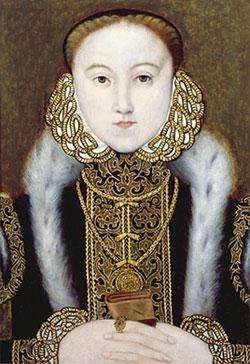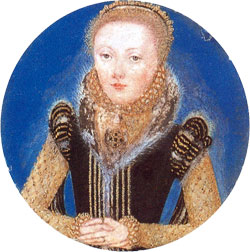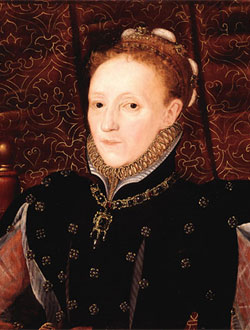I was so unsure of how to tackle the problem that I procrastinated about it until two weeks before I needed the finished sleeves. Desperation caused me to make a decision! The sleeve is not an accurately period pattern, being reasonably wide with a modern underarm seam. I added extended my existing sleeve pattern in the area around the arm pit, as I didn't want any chemise or smock to puff out there. The end result is very user-friendly. The sleeves are comfortable, look nice, and are not restrictive. One day when I am feeling confident, I will move the seam on the paper pattern to a more appropriate place.
Tacking on the ribbon prior to hand sewing
The sleeves are white cotton drill, lined in white cotton broadcloth. They are trimmed with a commercial ribbon that I have had in my stash for several years. The ribbon was hand sewn on. The sleeves needed to be wearable with Italian and English sixteenth century gowns. I would have preferred horizontal stripes to vertical, but I did not have enough trim. I thought some added gold ribbon would have been nice, but did not have the time to add it.
As I was rushing to prepare for an event, the sleeves were made without a piccadil strip, but I intend to add one in on each sleeve later.



















